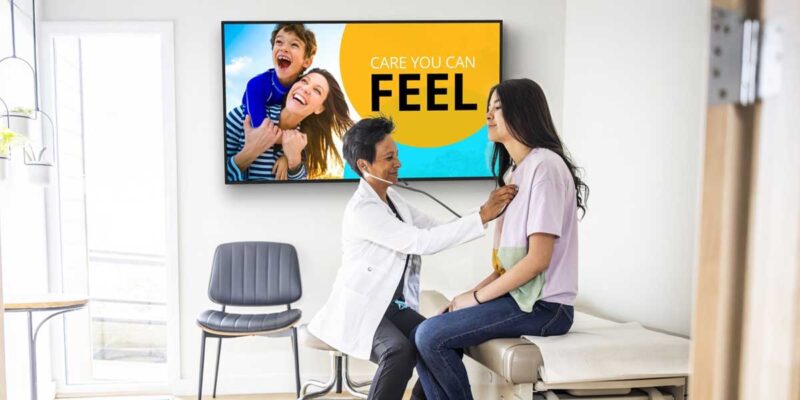Of Pies and Flat Panels: Sharp’s New Recipe
Imagine you own a cherry company that has a cherry orchard and makes cherry pie. The upside is that people like the pie, they recognize your brand, and they buy it frequently.
There is a problem though. It costs a lot to grow your own cherries. In fact, you have to sell your pie at a much lower margin than you’d like because you are tied to using your own cherries. Your pie company is not profitable despite its brand recognition and healthy sales.
Your orchard also sells the excess cherries it doesn’t consume, but has to do so at a loss to meet the market price. This means your competitors are buying up your cherries for less than it costs you to produce them, and selling a similar pie at a slightly cheaper price.
What do you do?
Option #1- Sell the cherry company’s name, trademarks, packaging and market share to your nearest competitor and put the money back into the orchard.
Option #2- Sell the orchard and buy cherries from someone else so you can continue making and selling the pie that everyone likes and regain the margins necessary to make a profit?
Choosing option #1 would be a very unwise decision. The money gained from selling off the rights to the pies would only help in the short term, as the long term problem of an unprofitable orchard remains. Eventually the money from the rights will all be used to subsidize a failing orchard for a limited amount of time.
Option #2 is the only option that leads to a profitable business enterprise. However, it takes a long time to plant and cultivate an orchard. There is a large financial investment as well as a potential emotional investment in the effort and letting go of it, though logical, may be the hardest thing to do. It becomes even harder if the ones who planted the orchard are still involved in management decisions at the company on any level.
Now substitute the cherry company for Sharp, the orchard for the LCD panel manufacturing division, and the pies for the consumer TV division and you may just start wondering if Sharp’s latest move wasn’t the wrong one.
I’m not in any way proposing that running Sharp is as “easy as pie”. I am however intrigued at Sharp’s latest move and question it’s long term effects on the company’s profitability and future in the industry.
If my pie analogy hasn’t quite convinced you, consider the following:
The LCD manufacturing business is a loser.
I have relayed this fact to a few in the industry and they look at me like I’m crazy. ‘With the proliferation of LCD screens in everything from phones to cameras to tablets to TVs how could LCD manufacturing be a losing venture Mark?” Well, I knew I had read an article on it a few years ago, and I finally found it again. According to an article in The Economist entitled Cracking Up by Alberto Moel, “between 2004 and 2010 the [LCD manufacturing] industry lost a combined $13 billion” due to prices falling “by 80% between 2004 and 2008, while the manufacturing costs declined by 50%.”
Another Japanese company, NEC, realized this in 2009 an finally exited the LCD manufacturing business despite the difficult task of severing partnerships and joint business ventures. If NEC, with their meager 3% market share in the LCD manufacturing business at the time was being drowned by this division, how much more of an anchor is this business unit for Sharp?
Who knows how much money Sharp actually loses in the manufacture of LCD panels. According to Moel, some companies have been hiding those losses with creative accounting for sometime or shuffling them around.
As a statement in bold here, I cannot speak with any authority on the accounting practices of Sharp. It would be interesting though to see how they allocate the cost of materials for their finished displays. Because Sharp is made of different business units they most likely buy LCD panels from their own manufacturing division for their consumer TVs. If they are buying them at above market prices, this means that the LCD manufacturing business would be artificially “propped up” while the consumer TV business would become less profitable than competitors buying panels on the open market, maybe even from Sharp themselves.
Hisense is inheriting the SEMEX facility in Mexico as part of purchasing the Sharp name and rights in the Americas. Given this fact, it is hard to imagine that Hisense will enjoy any additional gains in labor or manufacturing costs that Sharp hadn’t enjoyed already at that location.
The CEO of Sharp Electronics, Toshihiko Fujimoto states differently though in his official communication.
“Leveraging Hisense’s highly competitive manufacturing processes and Sharp’s distinguished brand image, Hisense will bring to market next year a line-up of Sharp branded LCD TVs, built to Sharp’s exacting quality standard, and offering premium technology and design at strong consumer values.”
Could the “highly competitive manufacturing processes” mentioned possibly include the fact that Hisense is not tied to artificially high LCD panel prices? I’m not sure but I think it’s a good question to ponder.
I would also venture that Sharp has some agreement with Hisense to buy their panels for the Sharp branded TVs, at least for the near future, and may be what Mr. Fujimoto is referring to when he states that, “We have also taken care in the agreement to protect the quality and other attributes associated with the Sharp brand as Hisense HK makes use of it.”
If however the consumer TV division was buying panels at increased prices from the mothership, and now Hisense will be purchasing those panels in line with their “highly competitive manufacturing processes” at a decreased cost, Sharp’s LCD manufacturing unit will take another hit.
Sharp is very proud of it’s LCD manufacturing business. Their CTO has boasted that, “Sharp is the world leader in LCD development. This is because we have many brilliant technicians with almost forty years of development experience.”
I can’t argue with that statement. I remember the first Aquos televisions I saw Sharp introduce and remember how bold it seemed to put out something new next to all the plasma displays selling at the time. Sharp knew the future of flat panel was not in plasma well before many others it seems.
Could it be this same pride and emotional investment in being the market leader in LCD development that is blinding Sharp to the fact that manufacturing LCD panels in a losing venture may be the same thing that kills the company in the long term?
Even the Japanese press has been critical of Sharp and their decisions to double down on LCD manufacturing with little change to it’s management plan, asking “Can Sharp Pull Out of It’s Nosedive?”
It’s rumored Sharp may lose up to 5,000 jobs this year. I doubt many of those people are at the top, and it seems that may be where some turnover is surely needed.
When the tree in the front yard starts to die, it’s easy to start cutting off branches, hoping that the roots and trunk are sound. But, if at it’s core, something is wrong with the tree itself, there is no amount of cutting that can help.
Is this the case with Sharp? We’ll see. They still have a few more divisions they can cut if this one doesn’t work I guess. It seems they’re investing in that orchard after all.
What do you think? Did Sharp make the wrong move? I’d love to hear your take in the comments.






